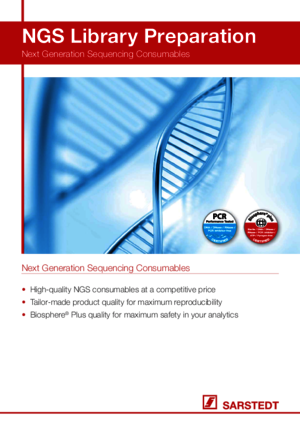
NGS Library Preparation
NGS Library Preparation
Language:
The Multiply® PCR range comprises certified products and accessories for homogeneous temperature transfer, shorter cycle times and more reproducible results in PCR and qPCR.
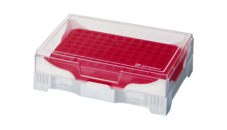
IsoFreeze® PCR Rack, material: PP, multi-coloured, format: 12 x 8, suitable for 0.1 ml and 0.2 ml PCR tubes, PCR strips and PCR plates, Colour change from purple to pink at 7 °C, 2 piece(s)/case
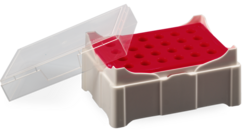
IsoFreeze® MCT Rack, material: PP, multi-coloured, format: 6 x 4, suitable for reaction tubes Ø 10.8 mm (1.5 ml & 2 ml), 1 piece(s)/case
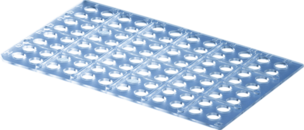
PCR work tray, material: PC, transparent, format: 12 x 8, suitable for 0.1 ml and 0.2 ml PCR tubes, 5 piece(s)/bag
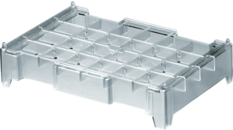
Base station, material: PC, transparent, (LxWxH): 128 x 85.5 x 30.4 mm, suitable for work tray 95.987.002 & 0.2 ml PCR tubes, 5 piece(s)/case
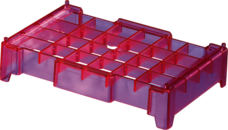
Base station, material: PC, red, (LxWxH): 128 x 85.5 x 30.4 mm, suitable for work tray 95.987.002 & 0.2 ml PCR tubes, 5 piece(s)/case
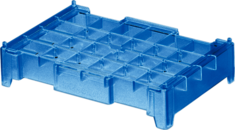
Base station, material: PC, blue, (LxWxH): 128 x 85.5 x 30.4 mm, suitable for work tray 95.987.002 & 0.2 ml PCR tubes, 5 piece(s)/case
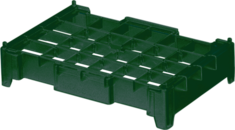
Base station, material: PC, green, (LxWxH): 128 x 85.5 x 30.4 mm, suitable for work tray 95.987.002 & 0.2 ml PCR tubes, 5 piece(s)/case
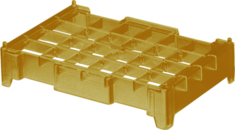
Base station, material: PC, yellow, (LxWxH): 128 x 85.5 x 30.4 mm, suitable for work tray 95.987.002 & 0.2 ml PCR tubes, 5 piece(s)/case
UV cuvette, max. working volume: 2.7 ml, material: special plastic, transparent, (HxW): 45 x 12.5 mm, optical sides: 2, suitable for use beginning at 220 nm, path length: 10 mm, centre height: 8.5 mm, sorted by mould cavity number, 100 piece(s)/polystyrene container

UV cuvette, max. working volume: 2.7 ml, material: special plastic, transparent, (HxW): 45 x 12.5 mm, optical sides: 2, suitable for use beginning at 220 nm, path length: 10 mm, centre height: 8.5 mm, sorted by mould cavity number, free from DNA/RNase/protein, 100 piece(s)/polystyrene container

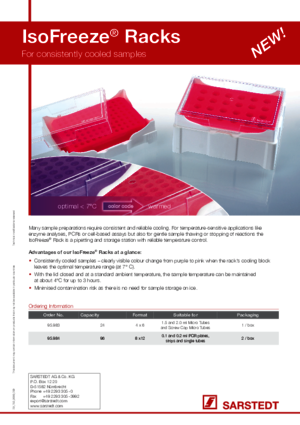
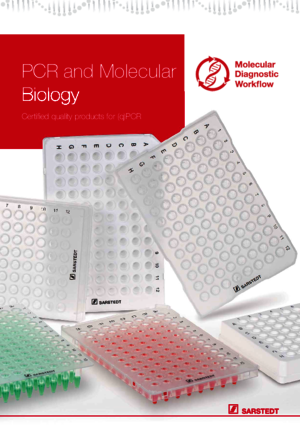
The following table lists the compatibilities of all common cyclers with our range of PCR plates.
In principle, it is possible to autoclave our PCR tubes and PCR plates without affecting the material properties as they are made of polypropylene. However, all Multiply® PCR tubes and PCR plates produced by Sarstedt are manufactured under cleanroom conditions and are free from DNases/RNases, DNA and PCR inhibitors ('PCR Performance Tested'). This means that the most important parameters for a reliable PCR result are present in advance and our PCR tubes and PCR plates can be used for PCR reactions directly. We therefore recommend that you do not autoclave 'PCR Performance Tested' certified PCR tubes and plates because, contrary to the intention of this step, it results in a risk of contaminating the materials with nucleic acids.
Low-profile PCR plates and PCR tubes have a low height, minimising the dead volume in the individual wells compared to high-profile products. Therefore the volume of reagents used can be reduced significantly, effectively reducing costs.
If there is only very minimal starting material and therefore a correspondingly low concentration of cDNA is available.
The optimised reflection properties of the wells of white Multiply® PCR plates effectively prevent 'crosstalk' between the wells and increase the fluorescence level of the qPCR reaction by a factor of 10. In this way, reliable Ct values can still be generated through the common qPCR cycles even when there is only a small volume of starting material.
If you are aiming to achieve the lowest possible variability.
The optimised reflection properties of the white Multiply® PCR plates ensure an even and stable fluorescence level of the qPCR reaction. This leads to a significantly improved reproducibility of the measurement results and increased accuracy. Tip: In order to further improve the variability, we recommend processing at least the template DNA and better still all of the reagents used, with our low retention pipette tips.
If you are aiming to save reagents.
The optimised reflection properties of the wells of white Multiply® PCR plates increase the fluorescence level of the qPCR reaction by a factor of 10. This means that the volume of reagents used can be reduced significantly, effectively reducing costs.
In principle, Multiply® PCR tubes and Multiply® PCR plates can be frozen as they are made of polypropylene. However, the freezing conditions must be selected such that the content can be evenly frozen or frozen from the bottom to the top. Cracks caused by strain can occur in the lower part if the upper part of the tube freezes first as a result of unfavourable freezing conditions. For example, depending on the diameter of the hole, stands made out of Styrofoam have a strongly insulating effect which makes it more difficult to ensure the even freezing of the samples. Due to the large number of possible influence factors (the load on the tubes can be very different depending on the medium to be frozen and the routine conditions), we recommend you carry out a freezing test under your routine conditions.
We offer special transparent lid strips (65.1998.400) and a selection of transparent foils (95.1994, 95.1999) for qPCR. Items with frosted lids in the PCR strips offer the advantage of improved labelling and are suitable for standard PCR applications.